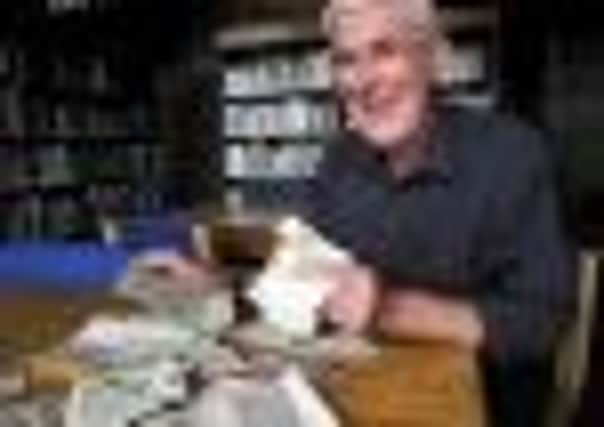Secrets of school’s hoarder boarders revealed


Usually nothing more exciting than a bit of loose change or a crumpled pair of socks is found.
But when Jane Peake, archivist at York’s Bootham School, decided to do one last sweep of dormitory 24 of Penn House before it was sold off for around £1.5m, the search bore rather more unexpected results.
Advertisement
Hide AdAdvertisement
Hide AdThe Grade II listed house, the former home of York’s famous Rowntree family, was sold to the school in 1920 to be used as a junior boys boarding house but has lain empty for the past two years after a new facility was built on site.


This summer, it has finally been sold to be re-converted into what is believed will be a family home.
But just days before the keys were handed over, Mrs Peake decided to take one last look in dormitory 24, the room where the eminent historian AJP Taylor resided while studying at the school in the 1920s, and where his diaries were famously discovered stuffed under the floorboards nearly 50 years later.
She dispatched two former pupils who are helping out at the school over the summer to take one last look under the floorboards, and the pair discovered a treasure-trove of old letters from other pupils dating back to 1931.
Advertisement
Hide AdAdvertisement
Hide AdAmong the hoard, was correspondence from a pupil in the 1960s, John Moore, whom the school has now tracked down to where he lives in Essex.


His letters range from triumph over making the school’s cricket 1st X11, to pamphlets about opposing the war in Vietnam.
Mr Moore, whose father also attended the school and was a contemporary of AJP Taylor’s, said: “It is an intriguing find and I really had no memory of hiding these things.
“But they certainly bring back memories of happy times at Bootham.
Advertisement
Hide AdAdvertisement
Hide Ad“They are the kind of family letters you’d expect and also a rather interesting collection of pamphlets, including one from ‘The York Vietnam Group’, encouraging opposition to the war.
“I know we boarders took a good deal of interest in political groups in York, not least because they offered us the ideal excuse to get out of school.”
Another newly-discovered diary entry, written by an unnamed pupil in 1931 and slightly interrupted by where it has been chewed by rats in the ensuing decades, details an argument between boarders in dormitory 24 about the merits of fascism.
It reads: “Wednesday – no match. After an hour’s consultation with a fascist selling pamphlets outside the exhibition building, Jock begins to acquire a liking for that political faith and wants to convert all and sundry in 24.
Advertisement
Hide AdAdvertisement
Hide Ad“Heres and Bertie have a long argument with him and intend to go along to argue... with the seller later.
“George unreservedly and unconditionally... all reject fascism in 24.”
Mrs Peake, who has worked at the school for more than 12 years, said: “This is a very interesting discovery and adds another layer of history to Bootham School.
“Before we finally sold the building, I just wanted to make sure we had found everything.
Advertisement
Hide AdAdvertisement
Hide Ad“I asked them to check the bedroom where AJP Taylor’s diaries had previously been discovered – and then we found this latest stash.
“It is quite mysterious as to why this particular bedroom seems to be the one where there was this tradition of stuffing things under the floorboards.
“Mr Moore has said we can keep these letters and they will be a fine addition to the school’s archives.”
It is the second important historical find at the school in just two years, after an English Civil War cannonball was found on site during its multi-million pound refurbishment in 2009.
Advertisement
Hide AdAdvertisement
Hide AdThe discovery of the 17th century artefact – which is about the size of a cricket ball – was made by a builder who found it under a floorboard in one of the bedrooms in Fox House, another boys’ boarding house,
The school believes it ended up in the grounds after Parliamentarians hauled a cannon on top of the tower of St Olave’s Church and directed their fire towards the Minster where the Royalists were holding a service.
It could also have come from the King’s Manor, which was a Royalist stronghold and was a regular target for cannon fire, with a good number of stray shots landing in the grounds of St Mary’s. It is believed it was found by a pupil during an archaeological dig and hidden under the floorboards.